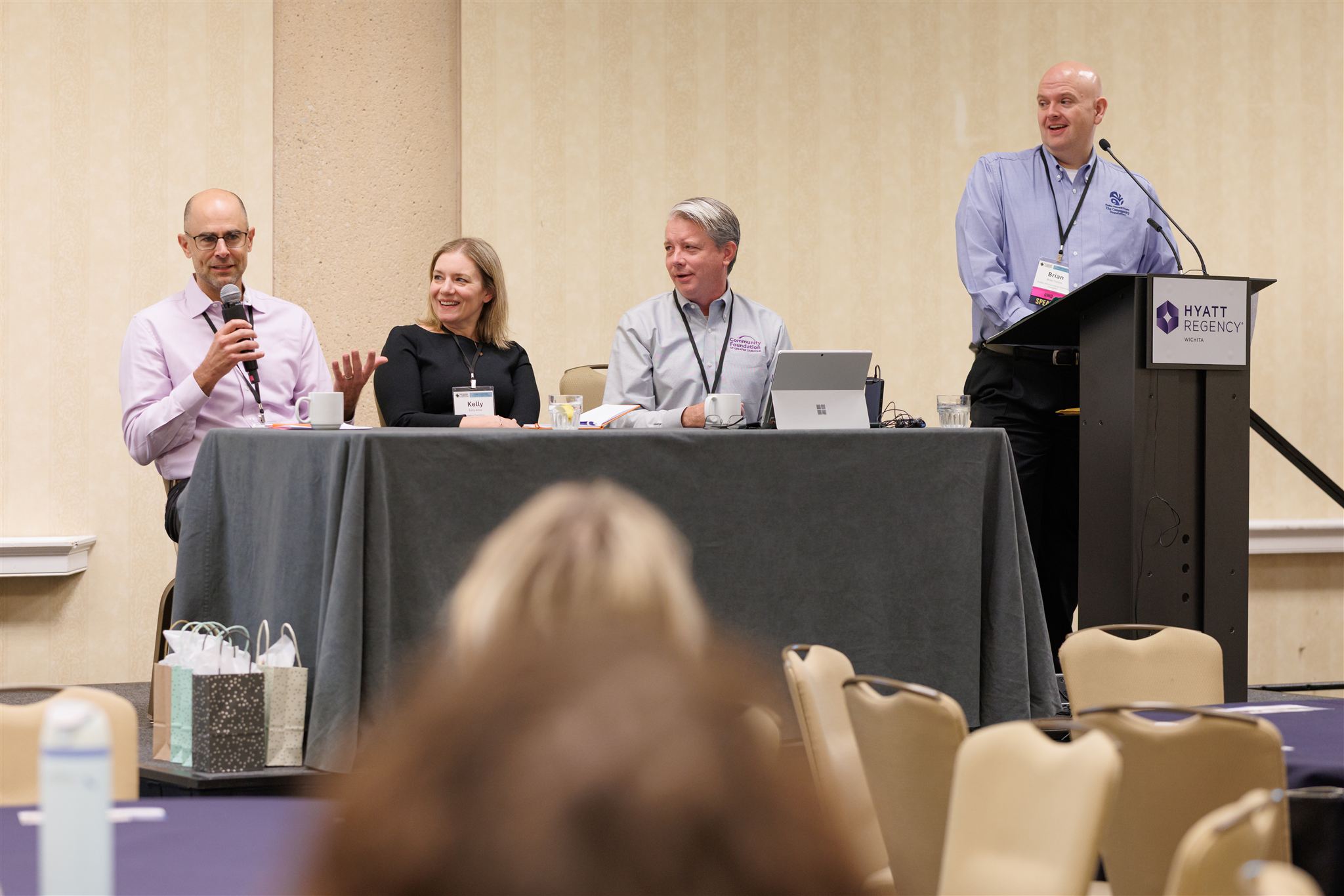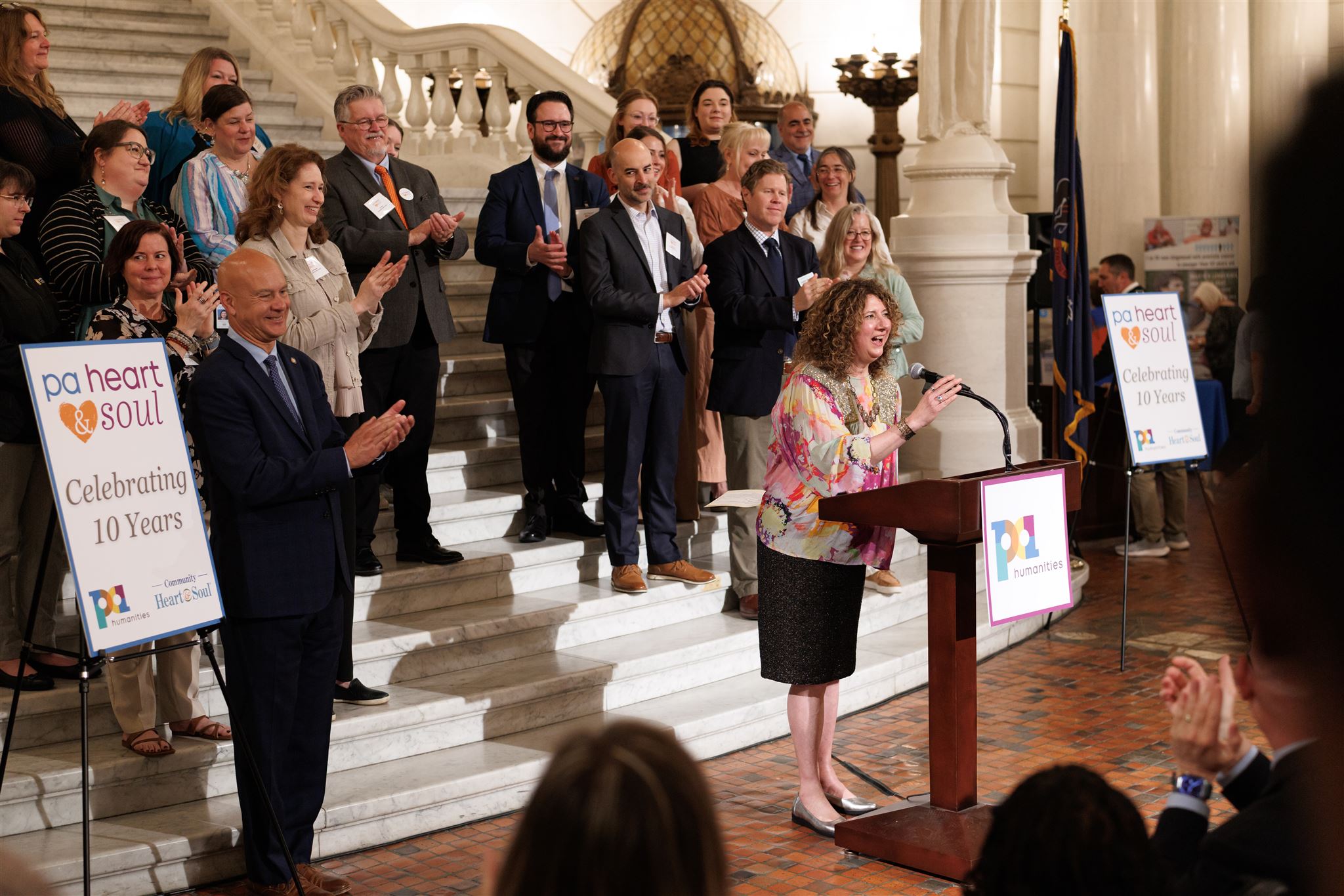How Community Foundations Are Strengthening Engagement and Leadership with Community Heart & Soul

At the recent Annual National Conference for Growing Community Foundations in Wichita, KS, foundation leaders hosted a session to share how they have successfully partnered with Community Heart & Soul to strengthen resident engagement, sustain momentum, and identify new leaders throughout their regions.
The session, moderated by Brian Treece, President & CEO of the Findlay-Hancock County (Ohio) Community Foundation, featured three panelists with decades of combined experience in their roles as foundation professionals and as Community Heart & Soul Coaches:
- Kelly Anoe – President and CEO of Legacy Foundation (Indiana)
- Joshua Kaiel – Director of Community Development at Innovia Foundation (Washington and Idaho)
- Jason Neises – Community Development Officer at Community Foundation of Greater Dubuque (Iowa)
Assessing Community Readiness
The panelists started by discussing one of the most vital elements to consider before putting time and resources into a community-wide effort: are the residents and local leadership ready? Jason encouraged the audience to participate in a short interactive example of the readiness assessment they use to ensure a Community Heart & Soul initiative is set up for success.
Attendees had a chance to put themselves in the shoes of community members, answering the complex questions facing cities and towns today: is there a unified vision for the future, do their fellow residents generally understand the Community Heart & Soul model, are municipal leaders open to the process, and more.
Using a digital poll for this assessment activity demonstrated the value of anonymity when gathering feedback in the field, allowing honest self-reflection that is difficult in a public meeting, where leaders and residents are often sitting side by side. This self-check is vital for a community to gauge its own capacity before taking the next step in the process.
Why Foundations Are Adopting the Heart & Soul Model
Historically, the relationship between some community foundations and the populations they serve has felt transactional. For Legacy Foundation, shifting the dynamic toward open communication and trust was a significant priority. After trying multiple consultants and programs, Community Heart & Soul proved to be the right fit, combining a methodology and resources that have been proven effective in small cities and towns across the country.
Aside from vetted case studies, Community Heart & Soul’s accessibility is also a major benefit. When an entire framework is provided at no cost to the foundation, including all coach training, tools, and staff oversight, the barrier to entry is lowered significantly.
Putting Aside Division and Uniting Through Story
Historically, the relationship between some community foundations and the populations they serve has felt transactional. For Legacy Foundation, shifting the dynamic toward open communication and trust was a significant priority. After trying multiple consultants and programs, Community Heart & Soul proved to be the right fit, combining a methodology and resources that have been proven effective in small cities and towns across the country.
Q&A Takeaways
What is a community foundation’s role in the Community Heart & Soul process?
The foundation’s role is adaptable, but a primary function can be serving as a supporter; foundation staff receive free, in-depth training from Community Heart & Soul. In an example from the Findlay-Hancock County Community Foundation, the organization selected a staff member to embed as a coach, and made their support to a Project Coordinator about one-fourth of their role. Whether it’s sharing collective knowledge among Heart & Soul towns or supporting financial aspects like grants and donations, this connection builds long-term relationships and visibility in the communities the foundation serves.
How long does the process typically take?
The typical timeframe to complete the four phases of the process is 18 to 24 months. However, the timeline isn’t set in stone and depends on the town’s capacity. Because Community Heart & Soul is focused on creating a long-term vision, ongoing practice never truly ends, and communities continue to follow their action plan and make decisions based on what residents care about for years to come.
Can the Community Heart & Soul model be used county-wide instead of town by town?
Yes, but it needs a clear purpose. Jason, who has coached two county-based Heart & Soul efforts, said it works well when the goal is to build a new county-wide identity, strengthen regional collaboration, or gather meaningful public input for a comprehensive county-focused plan.
What is the ideal population size for communities to see an impact?
The model is recommended for cities and towns with populations of 30,000 or fewer, regardless of proximity to any larger metropolitan areas. There is no set minimum, with one notable town having only 175 full-time residents!
Are local community Project Coordinators paid?
Paying Project Coordinators is highly encouraged to ensure a strong level of commitment, given the dedication required. Often a part-time, contracted position, the funding comes from grants and local matching funds raised by the community. When a community submits a budget for external financing or a Community Heart & Soul Seed Grant match, they can include compensation for a Project Coordinator.
Help Your Community Find Its Voice
We’re grateful to our partner panelists, attendees, and the Kansas Association of Community Foundations for an outstanding session. To those who couldn’t attend: we would love to connect!




